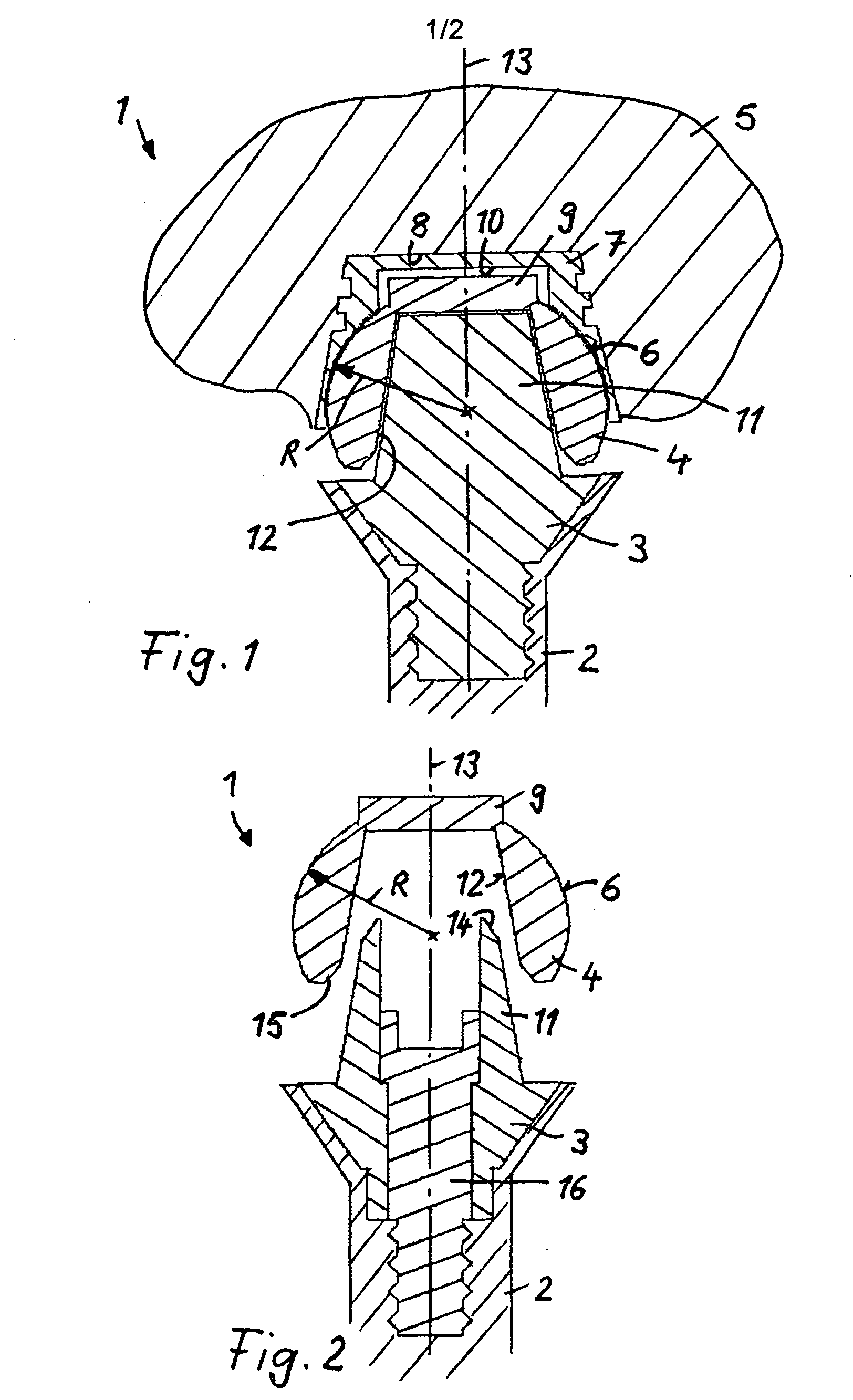Tooth implant with a primary and a secondary crown
a tooth implant and secondary crown technology, applied in the field of tooth implants, can solve the problems of relatively large length and relatively complicated design, and achieve the effect of preventing cogging of the prosthesis or the bridge during the installation
- Summary
- Abstract
- Description
- Claims
- Application Information
AI Technical Summary
Benefits of technology
Problems solved by technology
Method used
Image
Examples
Embodiment Construction
[0023]In the figures functionally identical parts are identified by the same reference numerals.
[0024]The tooth implant 1 as shown in FIG. 1 comprises a base carrier 2, which is to be anchored in the jaw of a patient, a primary crown 3 screwed into the base carrier 2, a secondary crown 4 connected to the primary crown 3 and a prosthesis 5 or bridge or similar structure disposed on the secondary crown 4. The screw connection between the base carrier 2 and the primary crown 3 is obtained by an internal thread provided in the base carrier 2 and an external thread provided on the primary crown 3 and threaded into the internal thread of the base carrier. The connection between the primary crown 3 and the secondary crown 4 is established by way of a cone section 11 projecting from the primary crown 3 into a complementarily shaped accommodation recess 12 formed into the secondary crown 4. Between the cone section 11 and the wall of the accommodation recess 12, a frictional engagement is to...
PUM
 Login to View More
Login to View More Abstract
Description
Claims
Application Information
 Login to View More
Login to View More - R&D
- Intellectual Property
- Life Sciences
- Materials
- Tech Scout
- Unparalleled Data Quality
- Higher Quality Content
- 60% Fewer Hallucinations
Browse by: Latest US Patents, China's latest patents, Technical Efficacy Thesaurus, Application Domain, Technology Topic, Popular Technical Reports.
© 2025 PatSnap. All rights reserved.Legal|Privacy policy|Modern Slavery Act Transparency Statement|Sitemap|About US| Contact US: help@patsnap.com



